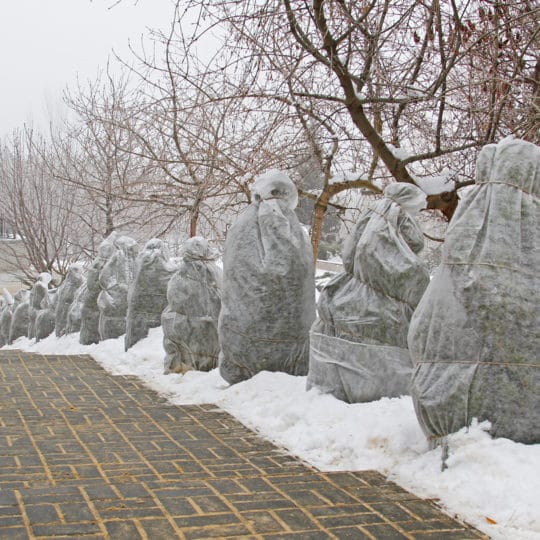3 Reasons You Should Wrap Your Tree this Winter
And How to do it Properly
Posted
January 11, 2024

Wrapping yourself in a coat or cozy blanket is one way to stave off winter’s chill. But what about for trees? While most trees can stand up to the harsh conditions, some are more susceptible to damage. Learn how wrapping trees in winter can help certain species survive the season.
Reasons for Wrapping Trees in Winter
Between damaging winds and hungry pests, there are many reasons why you may want to consider wrapping your trees this winter.
- Sunscald. Extreme temperature fluctuations can damage to tree bark. The sun warms the bark during the day only for it to freeze rapidly at night. Not only can this scald the bark and leaves, but it can also crack the trunk. Tree wraps shield the bark and helps insulate it from cracking.
- Pests. Rodents, deer, and other animals have a harder time finding food in the winter, especially when the ground is covered with snow. They may end up gnawing on the bark and branches for sustenance. Wrapping the tree helps deter pests from damaging the plant.
- Breakage. Young and newly planted trees that aren’t as established have weaker bark and branches more prone to damage, especially under the weight of snow and ice. Loosely covering these trees helps to protect and maintain their shape.
Tree Wrapping Techniques
Since tree wrapping is supposed to be a protective measure, how you wrap the tree is important. Done incorrectly, you could cause more damage. Here are some tips to keep in mind.
- Use breathable materials. Lightweight burlap or commercial tree wrap helps prevent moisture from getting trapped against the bark, reducing the risk of fungal diseases.
- Start at the base and work upward. Spiral the wrap around the base of the tree and overlap the layers upward for uniform coverage. Create a snug fit that’s not too tight so there’s room for growth and air circulation.
- Remove wrap in the spring. Once the weather starts to warm, it’s important to remove the wrapping. Excess moisture within the wrap can lead to disease. Pests are also likely to move in since the wrap provides a layer of shelter close to a food source.
Not all trees need to be wrapped in the winter, so it’s best to consult with a tree care specialist before using this preventative measure. Contact Cardinal Lawns to learn more about tree wrapping this winter to help ensure your plants survive the season.

Download Your FREE Summer Plant Care Guide
Help your plants make it through a hot & dry summer looking like a million bucks with our summer plant watering and maintenance guide!